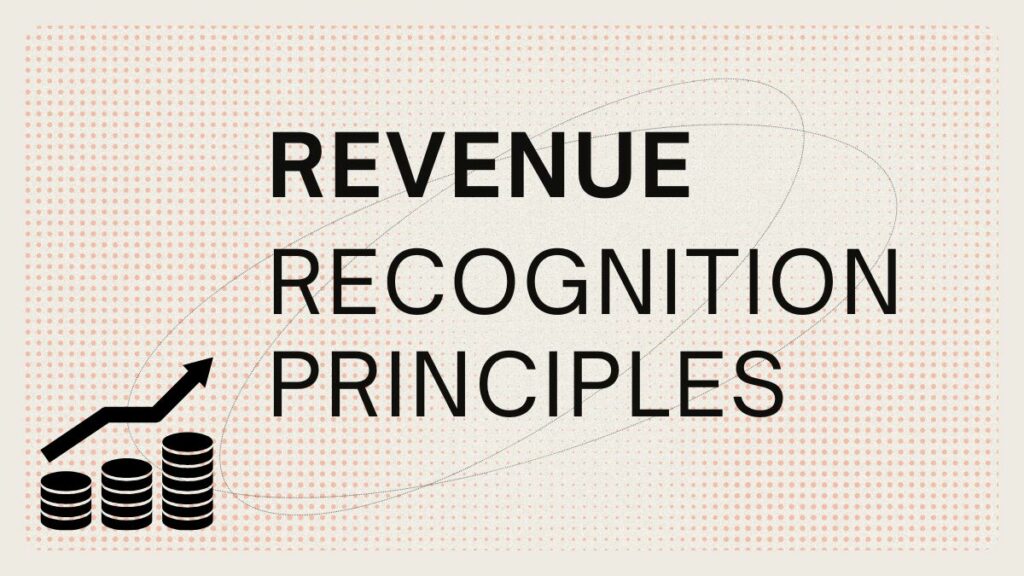Revenue recognition is a critical aspect of financial accounting that directly impacts a company's profitability. It involves determining when and how to record revenue in the income statement.
Accurate revenue recognition is essential for providing a true and fair view of a company's financial performance. This is why revenue recognition principles are considered crucial protocols that must be followed.
Enrol in Imarticus Learning’s financial management course if you wish to become an expert in finance and financial analysis.
The Five-Step Model of Revenue Recognition
The International Accounting Standards Board (IASB) and the Financial Accounting Standards Board (FASB) have established a five-step model for revenue recognition and revenue recognition accounting:
- Identify the contract with the customer: Determine if a valid contract exists between the company and the customer.
- Identify the performance obligations in the contract: Determine the specific goods or services the company must provide the customer.
- Determine the transaction price: Determine the total consideration expected from the customer.
- Allocate the transaction price to the performance obligations: Allocate the price to each performance obligation based on their relative standalone selling prices.
- Recognise revenue when the performance obligation is satisfied: Recognise revenue when the company transfers control of the promised goods or services to the customer.
Key Revenue Recognition Principles
- Persuasive evidence of an arrangement: A valid contract or other arrangement must be between the company and the customer.
- Delivery of goods or services: The company must have transferred control of the promised goods or services to the customer.
- Price is fixed or determinable: The transaction price must be fixed or determinable.
- Collectability is probable: The company must have a reasonable expectation of collecting the consideration from the customer.
Revenue Recognition Challenges
Revenue recognition can be complex, especially for businesses that sell goods or services over a period of time or that involve multiple performance obligations. Some common challenges include:
- Identifying performance obligations: Determining the specific goods or services that constitute a performance obligation.
- Allocating transaction price: When a contract involves multiple goods or services, the transaction price is allocated to multiple performance obligations.
- Recognising revenue over time: Recognising revenue over time when the transfer of control occurs over a period.
- Consignment arrangements: Recognising revenue in consignment arrangements where the seller retains control of the goods until the consignee sells them.
Best Practices for Revenue Recognition
- Document contracts: Maintain clear and complete documentation of contracts with customers.
- Understand industry-specific guidance: Be aware of any industry-specific guidance or interpretations of revenue recognition principles.
- Seek professional advice: If you need clarification on revenue recognition, consult an accountant or auditor.
- Review revenue recognition policies regularly: Ensure your company's up-to-date policies comply with applicable accounting standards.
The Impact of Revenue Recognition on Financial Reporting
Proper revenue recognition and accurate financial reporting are essential for providing a true and fair view of a company's financial performance. Incorrect revenue recognition can distort financial results and mislead stakeholders. By following revenue recognition principles, companies can ensure that their financial statements accurately reflect their revenue-generating activities.
Revenue Recognition and the Matching Principle
The matching principle is an accounting concept in which we recognise expenses in the same periods as the generated revenues. This ensures that the income statement accurately reflects a company's profitability. Revenue recognition is closely linked to the matching principle, ensuring that revenues are recognised in the same period as the related expenses.
Revenue Recognition and the Time Value of Money
The time value of money is an important consideration in revenue recognition. When revenue is recognised over a period of time, the present value of the future cash flows should be considered. This involves discounting the future cash flows to their present value using an appropriate discount rate.
Revenue Recognition and Non-monetary Transactions
Revenue recognition can be more complex in non-monetary transactions, such as bartering or exchanging goods and services. In these cases, the fair value of the goods or services exchanged should determine the transaction price.
Revenue Recognition and Contingencies
Contingencies are uncertain future events that can significantly impact a company's financial position or performance. Revenue recognition may need to be adjusted if there is a significant possibility of a contingency resulting in a material revenue reversal.
Revenue Recognition and Multiple-Element Arrangements
When a contract involves multiple performance obligations, the transaction price should be allocated to each performance obligation based on their relative standalone selling prices. Revenue should be recognised as each performance obligation is satisfied.
Revenue Recognition and the Impact of Taxes
Revenue recognition can have tax implications. The timing of revenue recognition can affect a company's taxable income and, consequently, its tax liability. Therefore, it is important to consider tax implications when determining revenue recognition policies.
Revenue Recognition and P&L Reporting Standards
Here are some common principles that apply to most P&L reporting:
- Consistency: Companies should use consistent accounting principles and methods over time to ensure comparability of financial statements.
- Materiality: The P&L statement should disclose only items that are significant enough to affect an investor's decision.
- Relevance: The information presented in the P&L statement should be relevant to users' needs.
- Timeliness: Financial statements should be issued in a timely manner to provide stakeholders with up-to-date information.
- Comparability: Financial statements should be comparable to those of other companies in the same industry.
Wrapping Up
Revenue recognition is a critical aspect of financial accounting that directly impacts a company's profitability. By following the revenue recognition principles and addressing the challenges associated with it, companies can ensure that their financial statements accurately reflect their revenue-generating activities.
Accurate revenue recognition is essential for providing a true and fair view of a company's financial performance, making informed decisions, and maintaining investor confidence. By understanding the key principles and best practices for revenue recognition, companies can enhance the quality of their financial reporting and mitigate the risks associated with revenue recognition errors.
Frequently Asked Questions
What is the significance of the five-step model for revenue recognition?
The five-step model provides a structured framework for determining when revenue should be recognised. It ensures that revenue is recognised in the appropriate period and in accordance with generally accepted accounting principles.
What are some common challenges in revenue recognition?
Common challenges include identifying performance obligations, allocating transaction prices, recognising revenue over time, and dealing with consignment arrangements.
How does the matching principle relate to revenue recognition?
The matching principle requires expenses to be recognised in the same period as the revenues they help generate. Revenue recognition is closely linked to the matching principle to ensure accurate financial reporting.
What is the impact of revenue recognition errors?
Incorrect revenue recognition can distort a company's financial results, leading to misleading information for stakeholders. It can also have tax implications and affect the company's valuation.











